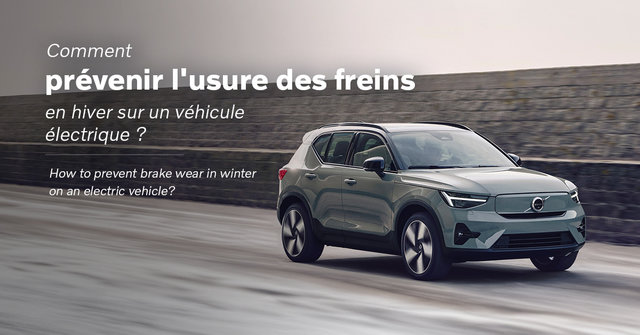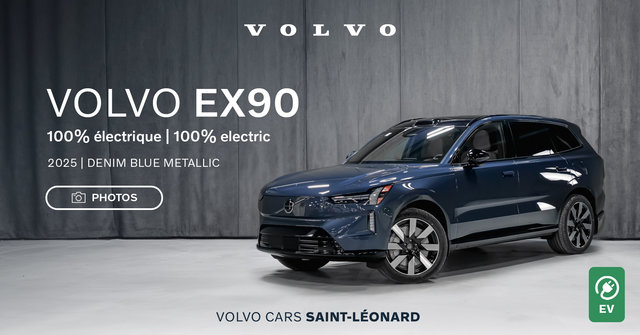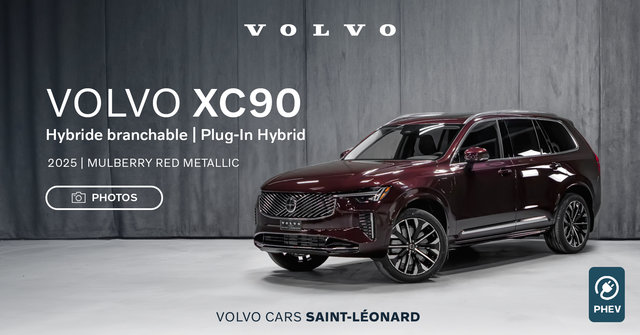Check out the real images of one of our first 2025 Volvo XEX90 in DENIM BLUE METALLIC color and in the PLUS trim. Stock number reference: #V25272

With the introduction of electric vehicles on the Quebec market, it's not just the automotive landscape that's changing - but a whole host of new habits to adopt on a daily basis.
For some, short trips will now be made in a Volvo EX30. Others will have to get used to Tesla recharging stations. Then there's the last category, which will make greater use of flexible driving techniques to increase battery autonomy.
In fact, one of them is called the "One Drive Pedal". And while this technique is good for autonomy, it's not always suited to Quebec winters.
In this article, we explain what "One Pedal Drive" is and how it impacts your braking system on a daily basis.
What is One Pedal Drive technology?
One Pedal Drive is a Volvo technology that lets you slow down your car with just the accelerator pedal (without using the brake pedal).
So every time you release the gas, kinetic energy is created, which in turn is recuperated by your Volvo's battery, increasing your vehicle's range.
We know from your feedback that you appreciate this technology, which offers greater comfort, less jerking during braking and acceleration, and longer battery life.
But there's a loser in the story - your brakes.
Why should you also use your Volvo's brakes?
If you drive only with "One Pedal Drive", you end up with a vehicle that brakes only with engine torque. As a result, your brakes never move - i.e. they never pinch the discs.
The problem is that in winter, snow accumulates on your braking system. And if you drive without using the brake pedal for an extended period of time, your discs and pads may rust, requiring replacement in the spring.
Is this covered by the Volvo Canada warranty? No, because this is not considered abnormal wear. It is due to non-optimal use of the vehicle.
So, if you're into "One Pedal Drive", think about your brakes too. Pressing down on the pedal from time to time will remove the oxidation that can build up on the discs.
In any case, if you have any doubts, or if you need a quick inspection of your brakes, book an appointment by clicking here.
With winter just around the corner, it's a good idea to make sure your Volvo can brake in the best possible conditions.
Other Articles That May Interest You
Check out the real images of one of our first new 2025.5 Volvo XC90 Plug-In Hybrid in MULBERRY RED METALLIC color and in the PLUS trim. Stock number reference: #V25271 Visit our new vehicle inventory
Check out the real images of one of our first 2025 Volvo XC90 in CRYSTAL WHITE METALLIC color and in the ULTRA trim. Stock number reference: #V25004 Visit our new vehicle inventory




























